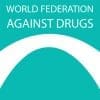POLICING EFFECTIVE WHILE PILL TESTING IS NOT
With the first reported medical issues at Festival X in Sydney, Drug Free Australia again extols the success of police in deterring many ecstasy users from putting pills in their mouths. This contrasts with the Canberra pill testing trial last April where not one ecstasy user was recorded as being deterred from ingesting ecstasy once their pill was identified as such.
Gary Christian, Research Director for Drug Free Australia believes that if police were to no longer deter speeding on the roads that road deaths would inevitably multiply. “It is the same with pills in festivals. The moment police stop trying to deter party drug use, drug use will increase along with deaths,” he said.
Statistics from England and Wales show that the introduction of pill testing did not produce any reduction in deaths as promised, nor did it appear to change the behaviour of users by getting some to quit using ecstasy, as also forecast by its advocates. While European countries have poor to non-existent statistics on ecstasy deaths, the UK keeps up-to-date figures. Pill testing operated by “the Loop” began in 2013 and by 2016 began expanding into 12 music festivals with government assent. In 2013 ecstasy was used by 1.2% of the population, rising significantly to 1.7% by 2017/18 (see Table 1.02). In 2013 there were 43 ecstasy deaths, more than doubling to 92 deaths in 2018.
The explanation for this failure lies in the science on MDMA-related deaths in Australia, where we are the only country worldwide to carefully examine past toxicology reports for ecstasy deaths. A recent study of 392 ecstasy deaths in Australia (see p 18) between 2001 and 2016 found no deaths from impurities or contaminants in pills. There was no record of deaths from bad batches where other deadly drugs were cut with the MDMA in a pill. Both were central rationales for introducing pill testing, but neither caused Australian deaths in the study. And because scientific studies have shown that ecstasy overdose is rare it is clear that the third rationale regarding overdoses from increasing purity is scientifically not yet demonstrated.
The actual causes of ecstasy deaths are due, in some cases, to an individual vulnerability to MDMA, even from a small fraction of a pill. This was what happened with Australia’s first ecstasy death in 1995. Anna Wood took an identical pill to her four friends but only she died. The majority of deaths are from individuals using ecstasy with alcohol, cocaine or amphetamines, and where the toxic effects of ecstasy are amplified by higher ambient temperatures and differing social situations which make it unpredictable to use. Almost all deaths are from normal recreational doses of ecstasy (see p 25). None of these causal triggers are properties of an ecstasy pill, and pill testing merely looks in all the wrong places.
Worst of all is that in the Canberra pill testing trials, when there obviously were batches of ecstasy pills containing N-ethyl pentylone sold around Canberra in both 2018 and 2019 which didn’t hospitalise even one user, pill testers were red-coding these pills but greenlighting, via a white slip of paper (see page 11), all pills found with ecstasy, despite ecstasy being the main cause of the many Australian deaths. Furthermore there was no evidence of counsellors dissuading any user from taking their tested pill, with not one user recorded discarding their ecstasy, evidencing zero behaviour change.
Harm Reduction Australia’s specious campaign to establish an intervention that provides little to no protective effect for ecstasy users will continue to mislead young Australians, broaden the pool of novice users and lead to more needless deaths.
Tony Wood – father of Anna Wood can be reached on 0404 407 477.




